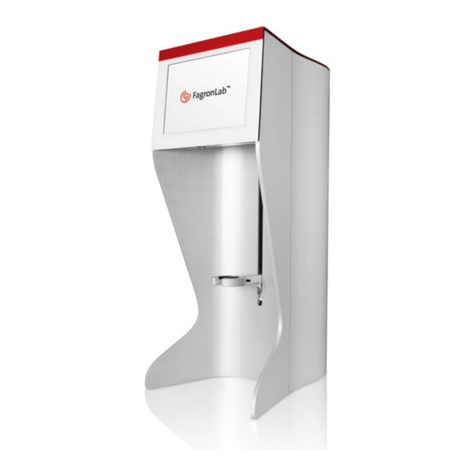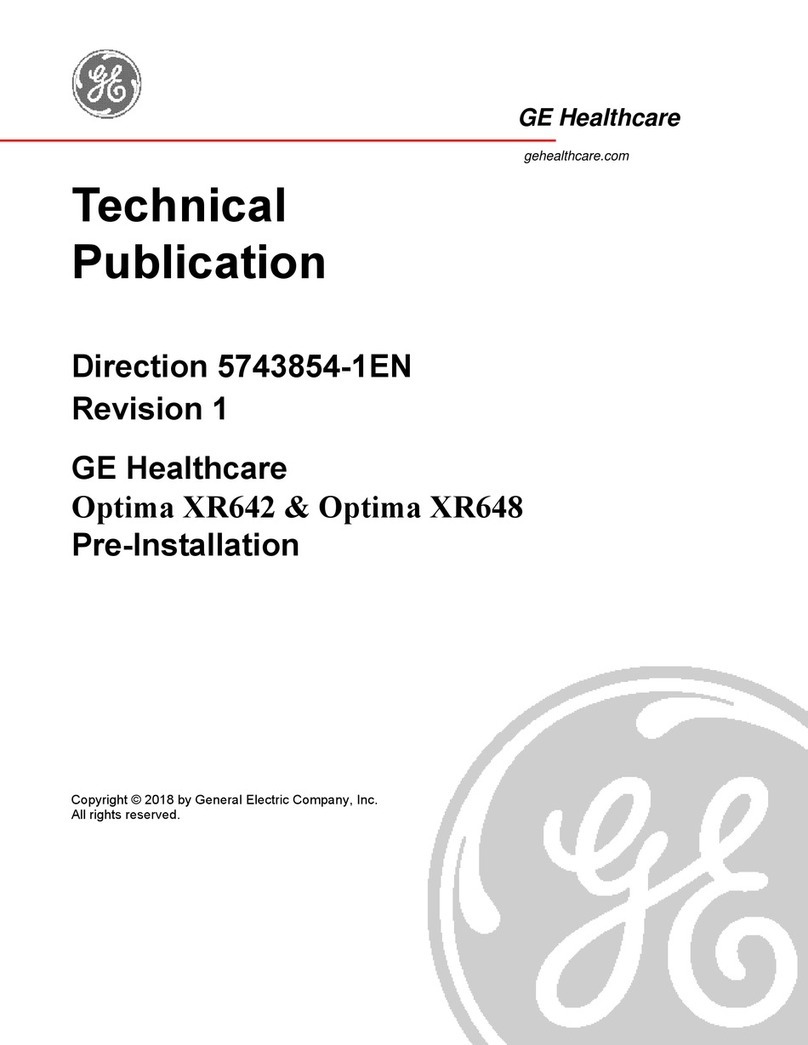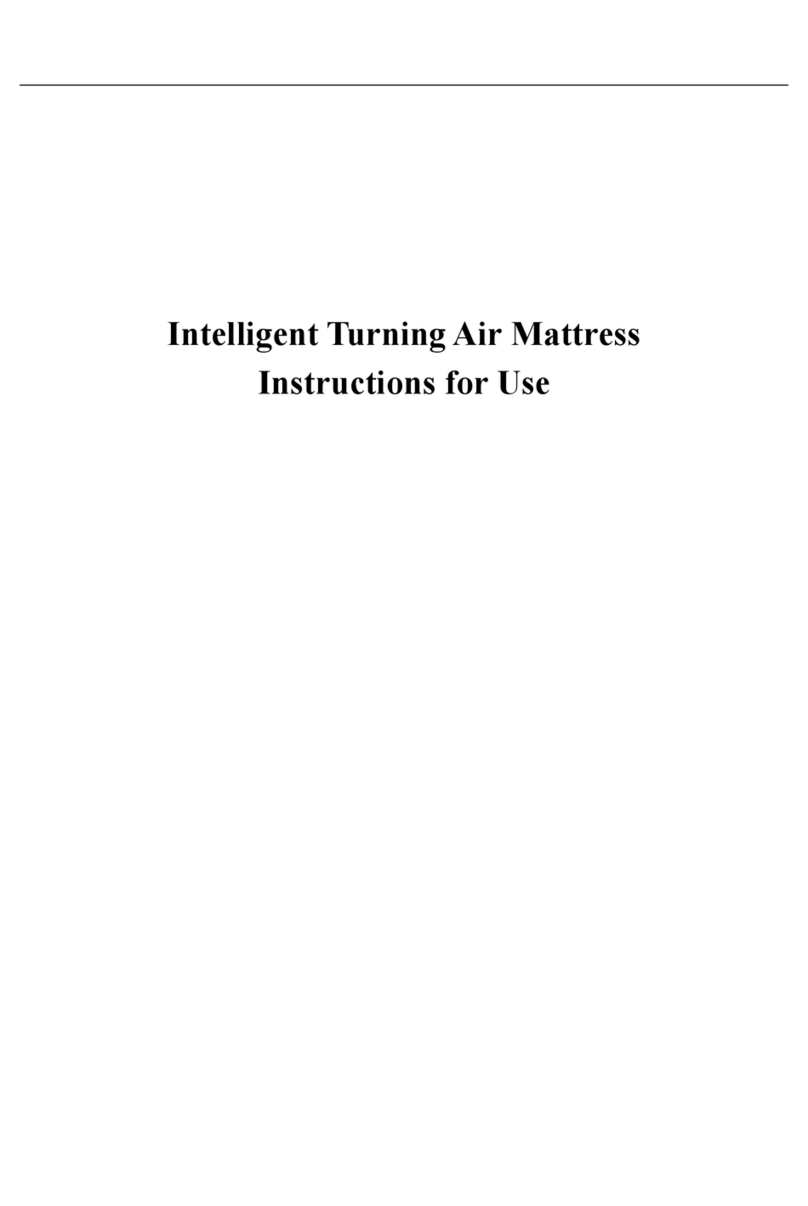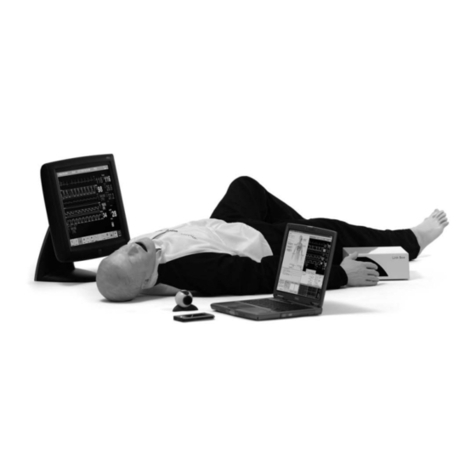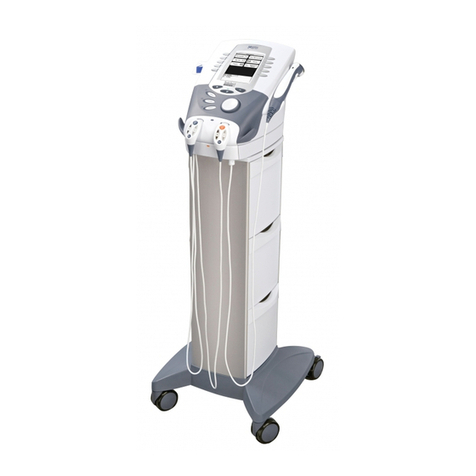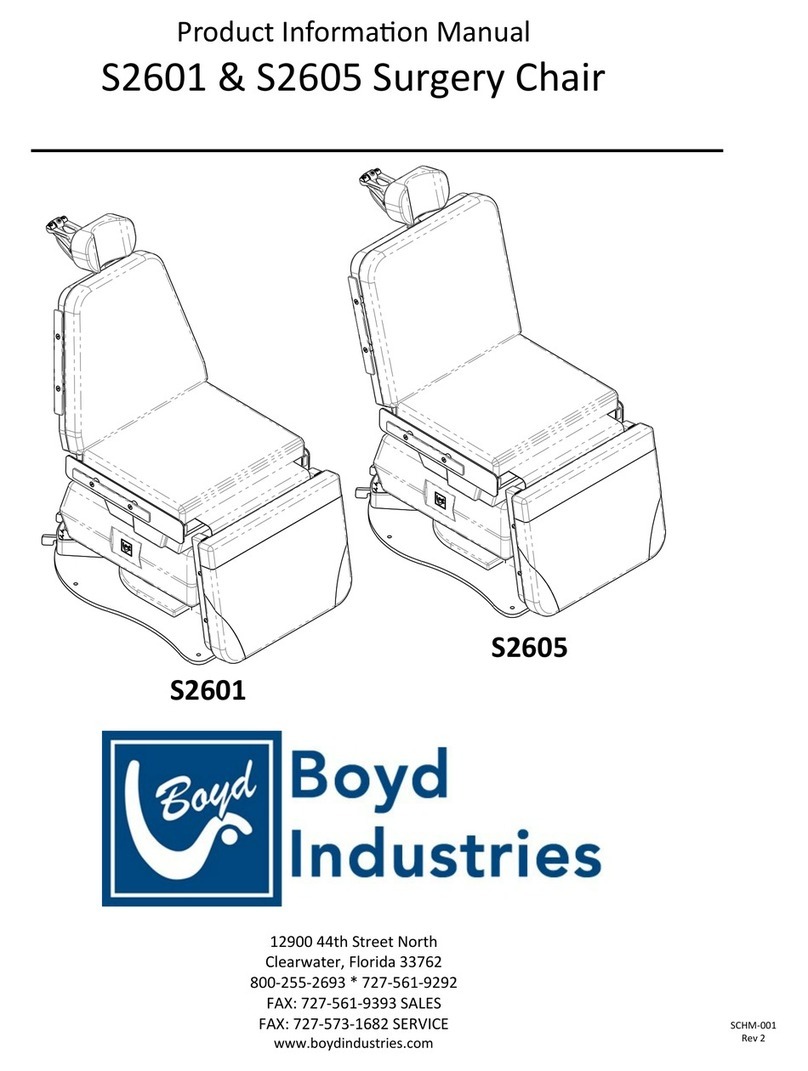Geodesic Sensor Net User manual


Geodesic Sensor Net
Technical Manual
S-MAN-200-GSNR-001
January 31, 2007

Electrical Geodesics makes no warranty or representation, either express or implied, with
respect to this manual, its quality, accuracy, merchantability, or fitness for a particular
purpose. In no event will Electrical Geodesics be liable for direct, indirect, special, incidental,
or consequential damages resulting from any defect or inaccuracy in this manual, even if
advised of the possibility of such damage.
Copyright 2007 by Electrical Geodesics, Inc.;
copyright 2001, as individual chapters in the
EGI System 200 Technical Manual
, by
Electrical Geodesics, Inc.
All rights reserved.

v
Geodesic Sensor Net Technical Manual
S-MAN-200-GSNR-001 • January 31, 2007
C
ONTENTS
List of Figures ix
List of Tables xiii
Preface
xv
About This Manual . . . xviii
Troubleshooting, Support, and Repair . . . xix
chapter 1
GSN Introduction
21
Safety . . . 22
Intended Use . . . 22
GSN Environmental Conditions . . . 22
Regulatory Compliance . . . 23
Symbols . . . 23
Sensor Array Overview . . . 24
chapter 2
HCGSN
29
Tension Structure and Pedestal Design . . . 32
Features . . . 34
Sizing . . . 36
Infant Nets . . . 37
Repair . . . 37
Recycling and Disposal of Nets . . . 38
For More HCGSN Information . . . 38

Contents
vi
Geodesic Sensor Net Technical Manual
S-MAN-200-GSNR-001 • January 31, 2007
chapter 3
GSN 200
39
Tension Structure and Pedestal Design . . . 41
Features . . . 41
Sizing . . . 44
Infant Nets . . . 44
Repair . . . 46
Recycling and Disposal of Nets . . . 46
For More GSN 200 Information . . . 47
chapter 4
Safety
49
General Safety . . . 49
Skin Irritation . . . 50
Subject Cross-Contamination . . . 50
Cords, Connectors, and Cables . . . 51
Electrolyte . . . 51
Lightning . . . 51
chapter 5
Service and Maintenance
53
Geodesic Sensor Net . . . 53
Cable and Connector Checks . . . 56
Component Recycling and Disposal . . . 56
chapter 6
Applying the GSN
57
Planning . . . 57
Preparing the Electrolyte Formulation . . . 58
Head Measurement . . . 60
Net Application . . . 62
Filling Pedestals with HydroCel HS . . . 74
Removal . . . 75
chapter 7
Rinsing and Disinfecting
79
Rinsing . . . 79
Disinfecting . . . 81
Second Rinse . . . 81
Drying . . . 82
Cleaning the Sponges . . . 82

Contents
vii
Geodesic Sensor Net Technical Manual
S-MAN-200-GSNR-001 • January 31, 2007
chapter 8
Connectivities
83
GSN and GSNIC . . . 83
Hypertronics Connector . . . 83
Connecting the Net . . . 86
Smart Nets . . . 87
Guide to Cabling . . . 88
chapter 9
Replacing GSN Parts
89
Replacing Electrodes (GSN 200) . . . 89
Replacing Sponges (HCGSN) . . . 97
Other Repairs . . . 99
Disposal of Electrodes or Sponges . . . 99
chapter 10
Net FAQs
101
General Issues . . . 101
Application and Comfort . . . 102
Electrolyte Formulations . . . 104
Care and Maintenance . . . 105
chapter 11
Troubleshooting
107
General Problems . . . 107
EEG Contains Excessive Noise . . . 108
EEG of Poor Quality . . . 109
Faulty Sensors . . . 112
Before Replacing a Sensor . . . 113
Miscellaneous . . . 113
chapter 12
Accessories and Supplies
115
Net Support Kit . . . 115
Replacement Parts and Supplies . . . 115
Items in the Net Support Kit . . . 116

Contents
viii
Geodesic Sensor Net Technical Manual
S-MAN-200-GSNR-001 • January 31, 2007
Appendix A Technical Support
119
Appendix B Net Sizing and Sensor Layouts
121
Appendix C GSN Pinouts
131
Terminology . . . 131
Abbreviations . . . 131
Pinout Schematics . . . 132
Pinout Tables . . . 133
Glossary
139
Index
145

ix
Geodesic Sensor Net Technical Manual
S-MAN-200-GSNR-001 • January 31, 2007
L
IST
OF
F
IGURES
chapter 1
GSN Introduction
1-1 The GSN 200 (left) and the HCGSN (right)
21
1-2 Core components
24
1-3 Subject wearing an HCGSN
25
1-4 Functional block diagram of a typical GES
25
1-5 Sensor array and Neurotravel amplifier
26
1-6 GSN, GSNIC, and Net Amps amplifier
26
chapter 2
HCGSN
2-1 128-channel HCGSN, front (left) and side (right) views
29
2-2 HCGSN (128-channel model)
30
2-3 HCGSN (128-channel model)
31
2-4 HydroCel Hydrating Skin Interface Chamber
32
2-5 Electrode
34
2-6 Pedestal and electrode
35
2-7 Sensor connected by wire to pin
35
2-8 Sensor cut-away view
35
2-9 The HCGSN comes in adult (left) and child (right) sizes
36
2-10 Outrider sensor
37
2-11 Elefix gel
37

List of Figures
x
Geodesic Sensor Net Technical Manual
S-MAN-200-GSNR-001 • January 31, 2007
chapter 3
GSN 200
3-1 128-channel GSN 200, front and side views
39
3-2 GSN 200 (256-channel model)
40
3-3 GSN 200 (128-channel model), without wire management
40
3-4 Electrode
42
3-5 Pedestal components
42
3-6 Sensor
42
3-7 Sensor cut-away view
43
3-8 Outrider sensor
44
3-9 Shorting straps for 64- and 128-channel infant GSN 200
45
3-10 Infant Net special Hypertronics connector, with outrider jacks strapped
to isolated common
45
3-11 Avoid passing connector or sensor end of GSN 200 through lead bundle
46
chapter 6
Applying the GSN
6-1 Measuring head circumference
60
6-2 Skull landmarks
61
6-3 Measure from the nasion to the inion
62
6-4 Measure between the preauricular points
62
6-5 Placing the sensor end of the Net in the electrolyte bucket
63
6-6 Lifting the Net out of the electrolyte bucket
64
6-7 The HCGSN features red pedestals for the nasion and cardinal points
65
6-8 Place thumbs under the Net’s perimeter band
66
6-9 Stretch the perimeter band with thumbs and little fingers
67
6-10 Slowly bring the band down over the head
68
6-11 Check position of Net before disengaging your hands
68
6-12 The HCGSN features cutouts for the ears
69
6-13 Upturn tilted sensors; check the back of the head
69
6-14 The nasion is too far to the subject’s left
70
6-15 Adjust Net position by grabbing large sections and shifting them
uniformly
70
6-16 Adjust the orbital straps (128-channel HCGSN)
71
6-17 Adjust big sections of the Net on both sides of the head
72
6-18 Check mastoid sensor positions (128-channel HCGSN)
72
6-19 Move each sensor side to side or in a circle to establish scalp contact
73
6-20 A properly applied Net
73

List of Figures
xi
Geodesic Sensor Net Technical Manual
S-MAN-200-GSNR-001 • January 31, 2007
6-21 Secure the Y clip to the collar
74
6-22 Initial removal of the Net from the subject’s face
75
6-23 Peeling the Net from the subject’s face
76
chapter 8
Connectivities
8-1 Multicontact Hypertronics receptacle (128-channel Net Amps 200
amplifier)
84
8-2 Hypertronics plug of 128-channel GSN
84
8-3 Hypertronics plug released (left) and locked (right)
85
8-4 Magnified view of Hypertac pin and sleeve
86
8-5 Plugging GSN into the GSNIC and the articulated arm
86
8-6 Schematic view of GSN connectors
87
chapter 9
Replacing GSN Parts
9-1 Electrode-replacement kit
89
9-2 Tools needed for replacing electrodes
90
9-3 Remove the handle on the Hypertronics plug
91
9-4 Remove the hood
91
9-5 Remove the screws and slide the clamp out
91
9-6 Let the wires hang loose
92
9-7 Remove the flat black end
92
9-8 Note the numbers and letters marked on the connector
92
9-9 Remove the contact using the extraction tool
93
9-10 Push the tool until the contact pin slides out
93
9-11 Use a pair of needle-nose pliers to grip the contact and pull it out
94
9-12 Enlarged view of Hypertronics contact
95
9-13 View of connector before inserting contact
95
9-14 Replace the hood without crimping the wires
96
9-15 Replacement sponges
97
9-16 In the empty pedestal, place the sponge upright
97
9-17 Push the sponge in firmly
98
9-18 Hydrate and again push the sponge in
98
9-19 A poorly seated sponge
99

List of Figures
xii Geodesic Sensor Net Technical Manual
S-MAN-200-GSNR-001 • January 31, 2007
Appendix B Net Sizing and Sensor Layouts
B-1 32-channel HCGSN v.1.0
123
B-2 64-channel HCGSN v.1.0
124
B-3 128-channel HCGSN v.1.0
125
B-4 256-channel HCGSN v.1.0
126
B-5 64-channel GSN 200 v.2.0
127
B-6 128-channel GSN 200 v.2.1
128
B-7 256-channel GSN 200 v.2.1
129
Appendix C GSN Pinouts
C-1 Schematic view of GSN connectors
132

xiii
Geodesic Sensor Net Technical Manual
S-MAN-200-GSNR-001 • January 31, 2007
LIST OF TABLES
chapter 1
GSN Introduction
1-1 Overall operating environment 22
1-2 GSN symbols 23
chapter 2
HCGSN
2-1 Infant HCGSN outrider sensors 37
chapter 3
GSN 200
3-1 Infant GSN 200outrider sensors 44
chapter 6
Applying the GSN
6-1 Thumb placement when applying Net 65
chapter 12
Accessories and Supplies
12-1 Net Support Kit items 116
Appendix B Net Sizing and Sensor Layouts
B-1 GSN 200 sizing chart 121
B-2 HCGSN sizing chart 122
B-3 Sensor layouts 123
Appendix C GSN Pinouts
C-1 Pinout tables 133
C-2 Sensor to 32-, 64-, and 128-pin plug 133
C-3 Sensor to 256-pin plug 135

List of Tables
xiv Geodesic Sensor Net Technical Manual
S-MAN-200-GSNR-001 • January 31, 2007

xv
Geodesic Sensor Net Technical Manual
S-MAN-200-GSNR-001 • January 31, 2007
PREFACE
he Geodesic Sensor Net (GSN) from Electrical
Geodesics, Inc. (EGI) is the first practical, safe method
for quickly placing 32 to 256 electrodes on the human head
to acquire dense-array electroencephalography (EEG)
data. Its rapid application and comfortable fit, as well as
the rich data it provides, make the GSN ideal for a wide
range of subjects/patients and applications.
The GSN features EGI’s patented dense-array EEG sensors
held in a tension structure that stretches over the head.
Each line between sensor pairs is a
geodesic
, the shortest
distance between two points on the surface of a sphere.
The accurate geodesic tesselation of the head surface
optimizes the sampling of the electrical field.
The geodesic tension network enables the placement of a
large number of electrodes on the scalp in a minimal
amount of time. The average application time for a 128-
channel GSN is 10 minutes, compared with the more than
two hours required by conventional EEG techniques. The
GSN’s high-impedance electrodes do not call for scalp
abrasion, thus increasing patient comfort and decreasing
infection risk.
EGI currently offers two versions of the Geodesic Sensor Net: the HydroCel GSN
(HCGSN) and GSN 200. This manual discusses the two models together because they
share many similarities. General information about their individual properties is
provided in Chapter 2, "HCGSN,” and Chapter 3, "GSN 200.” The models also have
different sensor layouts (see Appendix B, "Net Sizing and Sensor Layouts”) because
the HCGSN is designed to provide more coverage of lower sections of the head.
Consequently, EEG files acquired with the older GSN 200 are incompatible with those
acquired with the newer HCGSN.
T
The geodesic structure
allows for quick and
painless application.

xvi Geodesic Sensor Net Technical Manual
S-MAN-200-GSNR-001 • January 31, 2007
Preface
The GSN is an integral part of a Geodesic EEG System (GES), which is a complete
package for acquiring and working with EEG data. The other parts are the GES
hardware and the Net Station or Neurotravel Win software.
Following are brief descriptions of all the components and the available
documentation, posted as PDF files at www.egi.com/documentation.html:
Hardware related
• The Geodesic Sensor Net is EGI’s patented device for
acquiring electrical signals from the human scalp. This
manual, the
Geodesic Sensor Net Technical Manual,
provides comprehensive descriptions of all GSN features
and functions.
• GES hardware is all the system hardware except for the
GSN. GES hardware supports the acquisition and
processing of EEG data and includes an amplifier, a data-
acquisition computer, a monitor, and, in most cases, a cart
or travel case. The GES Hardware Technical Manual
provides comprehensive descriptions of all GES hardware
components and features.
• The Geodesic Photogrammetry System (GPS) is EGI’s
photogrammetry-based sensor-registration system. The
GPS consists of a geodesic dome structure containing 11
mounted cameras, a steel supporting structure, and the
Photogrammetry software feature in Net Station. The
Geodesic Photogrammetry System Technical Manual
provides comprehensive descriptions of all GPS
components and features.
Software related
• The Net Station Acquisition is the component of the
Net Station software for acquiring EEG, in conjunction
with the dense-array Geodesic Sensor Nets. The
Net Station Acquisition Technical Manual
provides
comprehensive descriptions of all Acquisition features and
functions.

xvii
Geodesic Sensor Net Technical Manual
S-MAN-200-GSNR-001 • January 31, 2007
Preface
• The Net Station Viewer is the component of Net Station for
viewing and navigating EEG data. The Net Station Viewer
Technical Manual provides comprehensive descriptions of
all Viewer features and functions.
• The Net Station Waveform Tools is the component of
Net Station for performing various operations on EEG
data. The Net Station Waveform Tools Technical Manual
provides comprehensive descriptions of all Waveform
Tools features and functions.
• The Net Station Viewer and Waveform Tools Tutorial
instructs you in the use of Net Station Viewer and
Waveform Tools by guiding you through the analysis of a
sample data set. It is not intended to be a comprehensive
guide to these components, but it is a good place to start
when learning about the software.
• The Net Station File Formats Technical Manual
documents the objects contained in a native Net Station
file, the formats of the export files, and other files
associated with Net Station.
• Neurotravel Win is EGI’s PC-only clinical EEG software
application. The
Neurotravel Win Technical Manual
describes all Neurotravel features and functions.
These publications contain a good deal of background information on the EEG field.
However, they are not intended to represent a complete primer. To get the most out of
these manuals, you should have some background in EEG methods.
Each manual assumes you are familiar with the platform for the specific EEG
acquisition software program described. For Net Station, the platform is a Macintosh
computer; for Neurotravel Win, it is a Windows-based PC.

xviii Geodesic Sensor Net Technical Manual
S-MAN-200-GSNR-001 • January 31, 2007
Preface
About This Manual
This section describes this manual’s features, organization, conventions and
typography, and use of notes, cautions, and warnings.
Features
This manual is supplied as a PDF file and in printed form. The hard-copy version has
been printed from the PDF so the content of both will match. The hard-copy manual
contains mostly grayscale images; the PDF contains color and grayscale images.
Manual Organization
This manual features a table of contents, list of figures, list of tables, and index, which
in the PDF are all hyperlinked to the topics they reference in the manual.
The chapters fall into five main categories:
•
Background
: Chapter 1, "GSN Introduction”; Chapter 2, "HCGSN”; and
Chapter 3, "GSN 200,” describe the GSN, explaining its features and
technology.
•
Safety and maintenance
: Chapter 4, "Safety,” and Chapter 5, "Service and
Maintenance,” provide information on safely using and maintaining your GSN.
•
GSN application and care
: Chapter 6, "Applying the GSN,” and Chapter 7,
"Rinsing and Disinfecting,” provide detailed instructions about applying the
Net and caring for it properly after every use.
•
Use-related issues
: Chapter 8, "Connectivities,” and Chapter 9, "Replacing
GSN Parts,” describe issues related to Net use.
•
Troubleshooting and supplies
: Chapter 10, "Net FAQs”; Chapter 11,
"Troubleshooting”; and Chapter 12, "Accessories and Supplies,” describe
common problems and available supplies.
A number of appendixes are also included:
• Appendix A, "Technical Support”
• Appendix B, "Net Sizing and Sensor Layouts”
• Appendix C, "GSN Pinouts”

xix
Geodesic Sensor Net Technical Manual
S-MAN-200-GSNR-001 • January 31, 2007
Preface
Conventions and Typography
• In this manual, the following are treated as synonyms:
Geodesic Sensor Net 200
and
GSN 200
;
HydroCel Geodesic Sensor Net, HCGSN,
and
HydroCel GSN
.
• The terms
GSN
,
Net
, and
Geodesic Sensor Net
are generic references to both the
GSN 200 and the HCGSN.
• The GSN can be used in research and clinical settings. For convenience, the
manual uses the term
subjects
to refer to both subjects and patients.
• In general, a minimal amount of special fonts are used—
italics
for definitions or
newly introduced terms, and boldface italics for important concepts.
Additional Information
Three different methods are used to convey additional information: notes, cautions,
and warnings.
Note: This indicates information that is helpful in understanding GSN operations.
Caution!:
This denotes important information that, if unheeded, could hinder use
of the product or result in injury or equipment damage.
WARNING!:
This denotes important information that, if unheeded, could result
in serious injury or death.
Troubleshooting, Support, and Repair
• Contingent on the cautions and warnings given in Chapter 4, "Safety,” user-
maintainable and user-serviceable components of the GSN are described in
Chapter 5, "Service and Maintenance.”
• For replacing electrodes of a GSN 200 or sponges of an HCGSN, consult
Chapter 9, "Replacing GSN Parts.”
• Chapter 11, "Troubleshooting,” is a troubleshooting guide.
• For online updates to this book, check EGI’s Documentation page at
www.egi.com/documentation.html.
• For GSN technical support, see Appendix A, "Technical Support.”

xx Geodesic Sensor Net Technical Manual
S-MAN-200-GSNR-001 • January 31, 2007
Preface
Table of contents
Popular Medical Equipment manuals by other brands
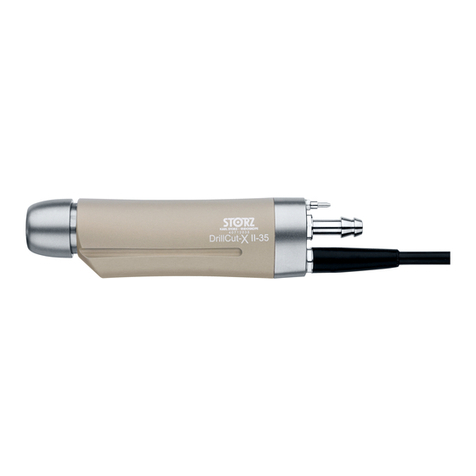
Storz
Storz DRILLCUT-X II Instructions for use
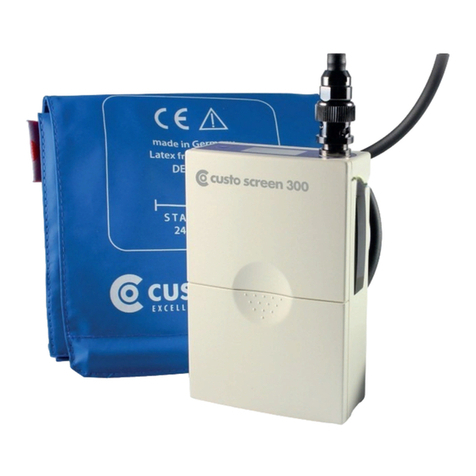
Custo Med
Custo Med custo screen 300 operating manual
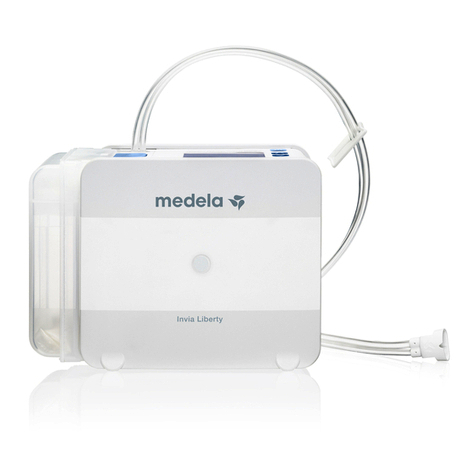
Medela
Medela Invia Liberty Instructions for use
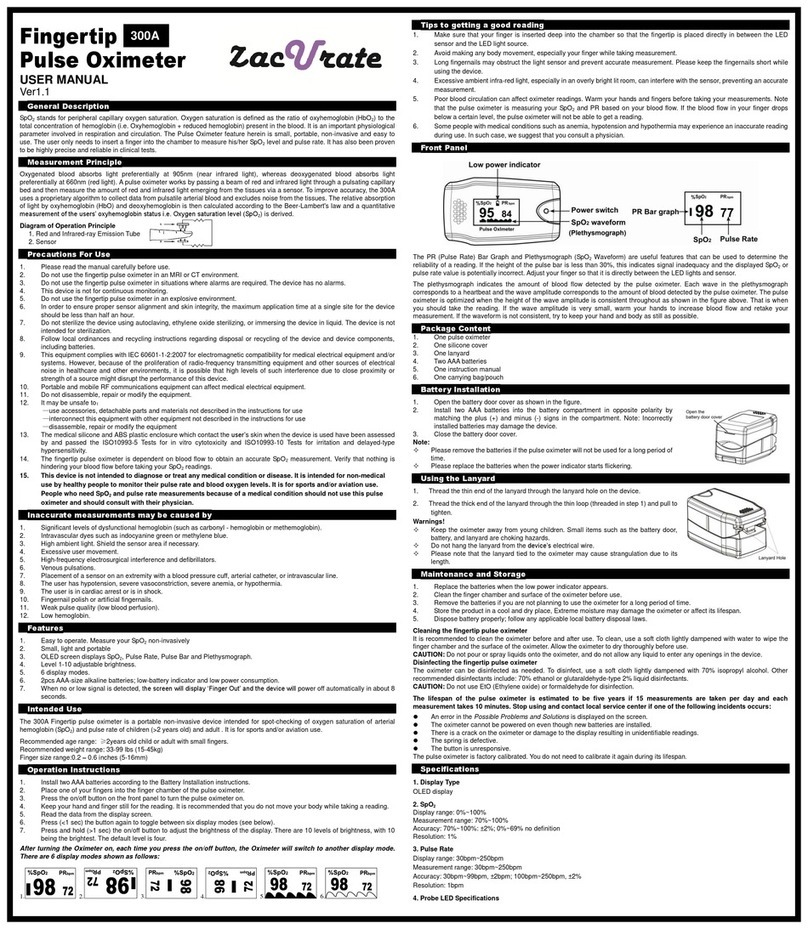
ZacUrate
ZacUrate Fingertip 300A user manual
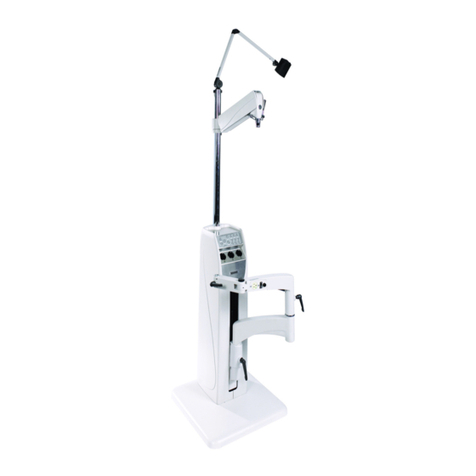
Reliance
Reliance 7900 Installation and operating instructions
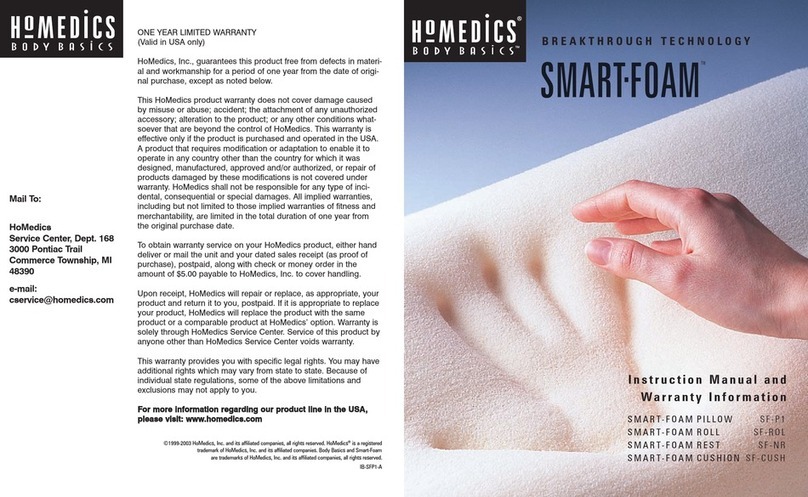
HoMedics
HoMedics SMART-FOAM SF-ROL Instruction manual and warranty information

OAKWORKS
OAKWORKS Clinician Premiere Series instruction manual
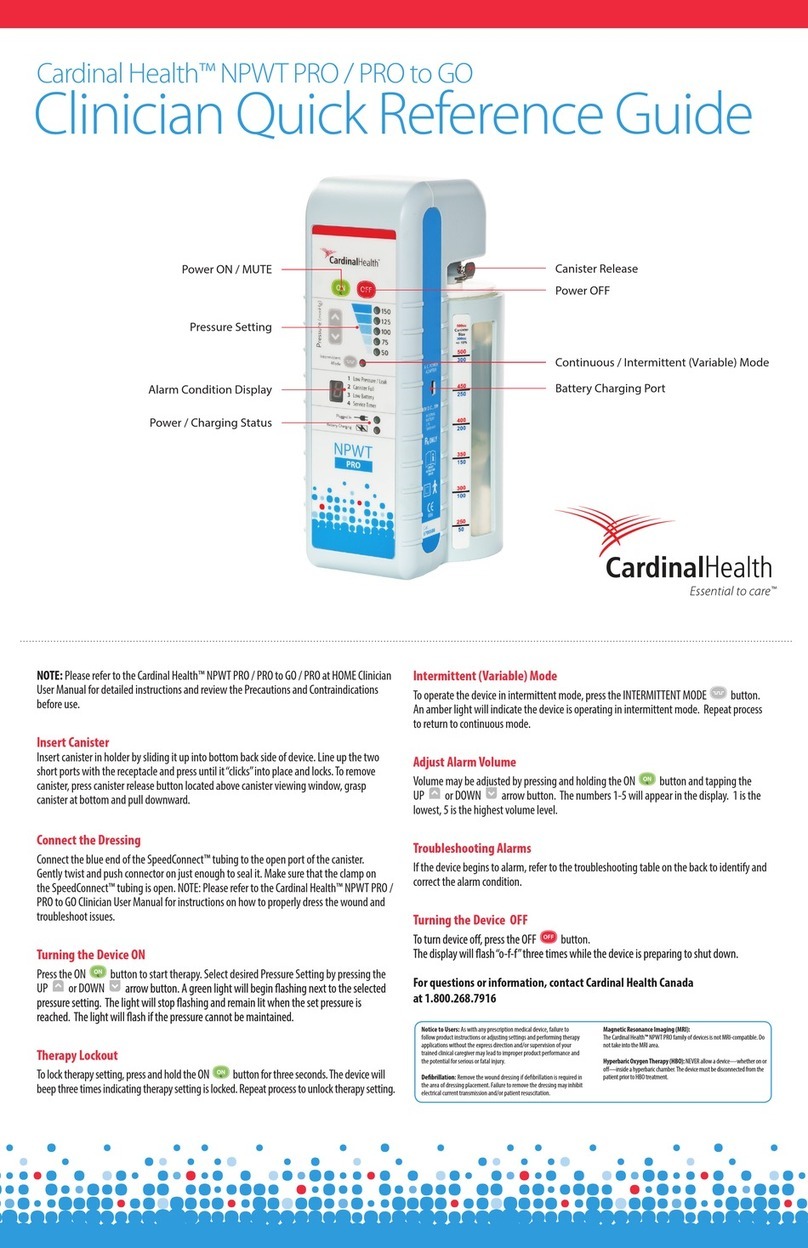
Cardinal Health
Cardinal Health NPWT PRO Clinician Quick Reference Guide
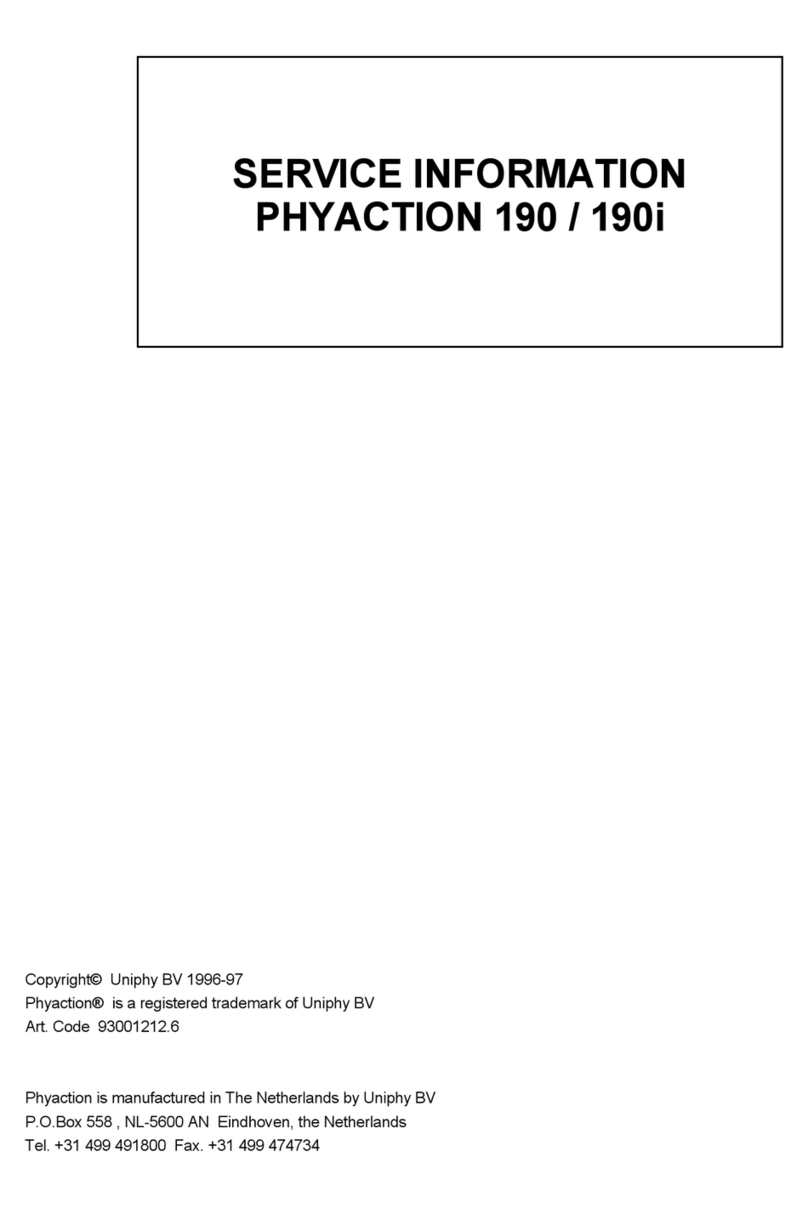
uniphy
uniphy PHYACTION 190 Service information

John Bunn
John Bunn JB02017 Operator's manual
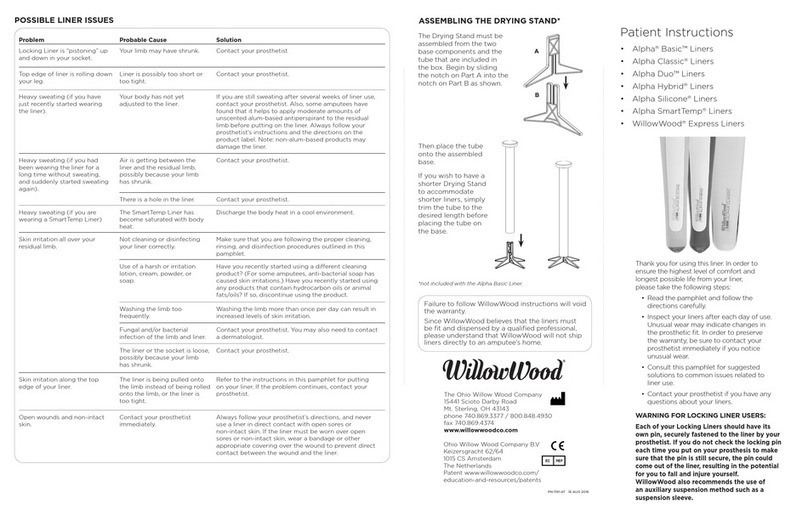
WillowWood
WillowWood Alpha Basic Patient instructions
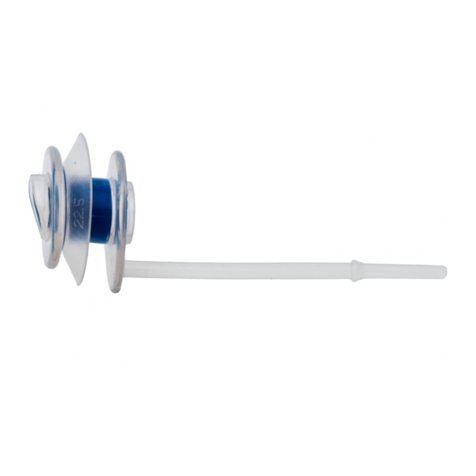
Atos Medical
Atos Medical PROVOX ActiValve Patient manual

